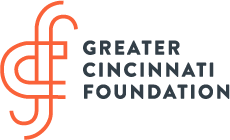Advising the charitable millionaire next door
At the end of 2024’s first quarter, CNN reports that an estimated 485,000 Americans could count themselves among the so-called “401(k) millionaires,” meaning the balance in their employer-sponsored retirement plans has reached the $1 million level. Thanks in part to stock market rallies during the first part of the year, that’s a larger number than ever before. Many of these 401(k) accounts will be rolled over into IRAs after retirement and the assets will continue to grow.
With so many of your charitably inclined clients holding large sums of money in 401(k)s and IRAs, now is an important time for a brief refresher course on the benefits of deploying these accounts toward achieving clients’ philanthropic goals. Although a charitable bequest of any type of property can help achieve a client’s estate planning and legacy goals, retirement accounts are especially powerful.
When your client names a charity or a fund at GCF as the beneficiary of a traditional IRA or qualified employer retirement plan, your client achieves extremely tax-efficient results. Here’s why:
- The client achieved pre-tax benefits over time as they contributed money to a traditional IRA or to an employer-sponsored plan, foregoing income tax on the money used to make those contributions (subject to annual limits).
- Assets in IRAs and qualified retirement plans then grow tax free inside the plan, waiving taxes on the income generated by those assets before distributions start in retirement years and allowing these accounts to grow rapidly.
- When a client leaves a traditional IRA or qualified plan to a fund at GCF or another charity upon death, the charity does not pay income taxes or estate taxes on those assets. By contrast, if the client were to name children as beneficiaries of an IRA, for example, those IRA distributions to the children are subject to income tax and potentially estate tax, and that tax can be hefty given the tax treatment of inherited IRAs.
If your client is deciding how to dispose of stock and an IRA in an estate plan and intends to leave one to children and the other to charity, leaving the IRA to charity and the stock to children is a no-brainer. The client’s stock owned outside of an IRA gets the “step-up in basis” when the client passes away, so the children won’t pay capital gains taxes on the pre-death appreciation of that asset when they sell it.
Speaking of savvy giving techniques using IRAs, a client who is 70½ or older can make tax-efficient gifts directly from an IRA to a qualified charity (including certain types of funds at the community foundation), up to $105,000 per year! This is known as a Qualified Charitable Distribution (QCD). See below for more information on QCDs.

